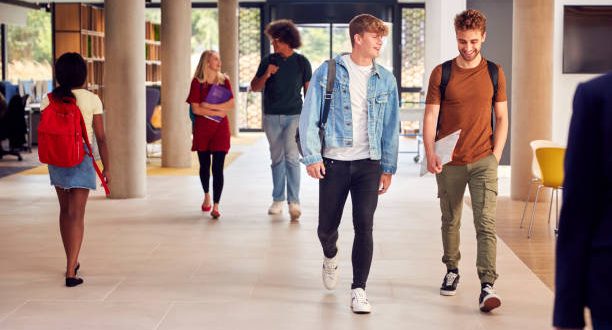Traditional face-to-face classes have been a reliable teaching and Student Learning method for a long time. It has yielded tangible and satisfying outcomes and was challenged once the world confronted an all-encompassing threat: the CoVid-19 epidemic that slowed everyone from attending traditional classes in person.
The situation showed that technology could be adequate to provide the same or better results for learning. Technology has a direct impact on education in many ways. If you want to know more about the effects of technology, check out this guide to answer the query “How does technology impact Student Learning?”
Use of Technology in Modern Education
Today, technology has been integrated into all aspects of our lives, not just the educational field. It’s a tool that assists us in completing complex tasks in a short time and with efficiency.
It is important to remember that technology is a tool to aid education, but it needs help solving problems. The effectiveness of technology for education lies in the work that teachers do with it and how they apply it to fulfill the demands of their students.
Utilizing digital tools for learning in the classroom can increase students’ engagement, aid teachers in improving their lesson plans and enable personalization of learning. Additionally, it helps students to build the ability to think critically.
Virtual classrooms, Augmented reality (AR) videos, various robots and other tools for technology will not only enhance the learning experience. However, they help develop inclusive practices that promote collaboration and curiosity and allow teachers to gather data about students’ performance.
Benefits of Technology in Education
Everybody uses technology in one way or another during our daily routines. Technology becomes more essential for us as time passes, transforming how we consume and process information.
Technology’s impact is evident everywhere in our lives. However, its impact on education has been the most obvious in recent years. Schools are incorporating more technology into their curriculum to stay up-to-date with the latest technological advancements to prepare students for the constantly changing technological world.
Implementing Students Knowledge Into Practice
One of the most significant advantages of using technology in the classroom is that it puts students’ knowledge and abilities into practice. Students earn valuable knowledge by taking online classes and interactions with teachers and other students. However, it’s essential to put these newly acquired abilities into action and put them into practice.
Technology allows students to apply their skills to action through various applications. Technology integration in the classroom allows teachers easily assign different assignments and tasks that enable students to apply their knowledge and experiences into practice and gain the capacity to apply their knowledge and expertise to find a solution for an issue, situation, or situation.
Enhancing Students “Critical Thinking
Technology will influence students’ critical thinking abilities in a variety of factors, including the type of technology utilized and the environment in which it is employed.
It’s a fact that using technology in classrooms can make the learning process more enjoyable. Technology can stimulate multiple senses and enhance students’ interest in the content.
A well-equipped classroom can boost students’ attainment in academics confidence, self-confidence, motivation to classes, and attendance. Technology aids students in their transition from seated, attentive and listening to hands-on learning.
Furthermore, technology enhances critical thinking by helping students in applying the knowledge they’ve learned in real-world scenarios and learn problem-solving skills Both of which are vital elements that are essential to critical thinking.
More Collaboration
Collaboration can be made more accessible with technology for education. Teachers can interact with students during class; however, students can also communicate with each other. Students work together to solve problems by taking online courses and educational games.
Students can discuss their thoughts and ideas and help one another out in group activities. In addition, technology permits personal contact with teachers. Students can ask questions about the classroom and receive additional assistance with difficult-to-understand subjects. Students can upload assignments at home, while teachers can view and access the projects they have submitted on their devices.
 Latest News | The Blogger Zone
Latest News | The Blogger Zone




